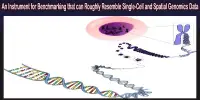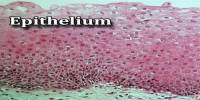Recent discoveries of novel, highly effective anticancer drugs with tridimensional structures that have strong anticancer activity, low toxicity, and the capacity to overcome drug resistance in cancer cells were made by a research team co-led by chemists from City University of Hong Kong (CityU). The findings help provide a new direction for anticancer drug development.
Cancer has long been a devastating disease, which affects millions of people worldwide. Despite advancements in medicine, many anticancer medications still exhibit poor cancer selectivity, severe side effects, and drug resistance in cancer cells.
“The structure of drugs greatly affects their anticancer performance,” explained Dr. Zhu Guangyu, Associate Professor in the Department of Chemistry at CityU. “Most anticancer drugs have planar structures; developing new compounds with tridimensional structures may provide an opportunity to address the limitations of current anticancer drugs.”
The team tested a new class of tridimensional and chiral compounds, which exhibit promising anticancer activity and present action mechanisms that are different from conventional anticancer drugs to combat drug resistance, in collaboration with scientists from The Hong Kong University of Science and Technology (HKUST).
To produce a novel class of tridimensional and chiral tetraarylmethane compounds with superior anticancer activity and lower toxicity than the commonly used anticancer medication doxorubicin, the researchers first created a novel, extremely effective catalytic synthesis approach.
The structure of drugs greatly affects their anticancer performance. Most anticancer drugs have planar structures; developing new compounds with tridimensional structures may provide an opportunity to address the limitations of current anticancer drugs.
Dr. Zhu Guangyu
The researchers evaluated the substances in vitro with cancer cells while using the drug doxorubicin as a control. Tetraarylmethane compounds were discovered to be more toxic to cancer cells, especially lung cancer stem cells (LCSCs), which are infamous for developing drug resistance to modern chemotherapeutic treatments, leading to treatment failure.
Additionally, the substance showed improved cancer cell selectivity and appeared to be less hazardous because it didn’t kill healthy live cells as much.
The team further analyzed the structure-activity relationship of synthesized compounds. They discovered that the tetraarylmethane compounds’ cytotoxicity to cancer cells was greatly enhanced by the presence of specific substituents, such as halogen and hydroxyl groups, at particular positions.
Some cancer cells began to die after being exposed to the synthetic substance; this was evidenced by the appearance of enlarged organelles, permeable cell membranes, shrunken and fragmented nuclei, and organelle swelling. This suggests that necrotic cell death might have been triggered by the tetraarylmethane compounds.
The bulk of anticancer medications currently in use depend on the activation of apoptotic pathways to kill cancer cells. The creation of novel anticancer drugs that focus on alternate cell death pathways is a promising new research direction for lowering drug resistance, nevertheless. The team’s investigations revealed that these novel substances caused a distinct mechanism for cell death.
As a result, the compounds are highly desirable for further investigation in the field of cancer treatment because it appears that they can avoid the resistance mechanisms produced by current medications.
“The satisfactory anticancer performance and unique mechanism make these compounds potential candidates for anticancer agents for further development,” said Dr. Zhu. The team plans to synthesize more compounds and conduct further experiments to evaluate their anticancer performance.
















